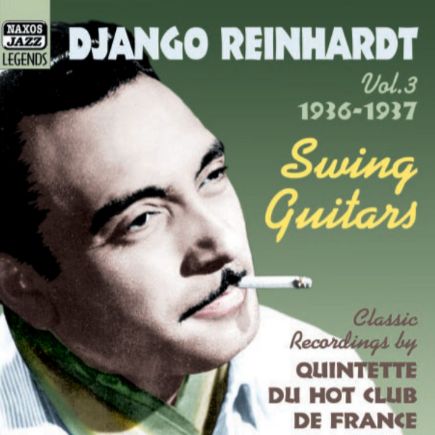Ain’t Misbehavin’: Fats Waller, Harlem et l’affirmation d’un art
Composée en 1929 par Fats Waller et Harry Brooks, sur des paroles d’Andy Razaf, Ain’t Misbehavin’ est bien plus qu’un simple succès musical: elle incarne l’esprit foisonnant de la Harlem Renaissance. Pensée comme numéro d’ouverture de la revue Connie’s Hot Chocolates, produite au Connie’s Inn — principal rival du Cotton Club —, elle célèbre l’inventivité afro-américaine dans un contexte de profonde effervescence artistique.
La chanson séduit par la combinaison d’une mélodie accrocheuse et d’harmonies sophistiquées, typiques du style stride dont Waller était l’un des maîtres incontestés. À travers un texte sur la fidélité amoureuse face aux tentations, Ain’t Misbehavin’ trouve une résonance universelle et intemporelle, renforçant son pouvoir d’attraction bien au-delà de son époque.
Son destin bascule lorsqu’un jeune Louis Armstrong est invité à doubler l’orchestre de Leroy Smith pour jouer au Hudson Theater. Son interprétation entre les actes, d’abord discrète depuis la fosse, devient rapidement le point culminant du spectacle. Un critique du New York Times souligne la puissance de ce moment, décrivant la chanson comme ‘synthétique, mais tout à fait agréable’. Armstrong est alors officiellement intégré à la distribution: sa prestation, désormais sur scène, propulse sa carrière vers une reconnaissance nationale.
Quand le swing manouche réinvente Fats Waller
Enregistrée à Paris le 22 avril 1937, cette version de Ain’t Misbehavin’ par Django Reinhardt et le Quintette du Hot Club de France incarne l’une des plus belles synthèses entre le jazz américain et l’esthétique européenne. Autour du guitariste belge d’origine rom, figure tutélaire du jazz manouche, se réunissent Stéphane Grappelli (violon), Pierre ‘Baro’ Ferret et Marcel Bianchi (guitares rythmiques), ainsi que Louis Vola (contrebasse).
L’enregistrement illustre également le rôle de Paris, dans les années 1930, comme foyer du jazz européen. Capitale cosmopolite et bouillonnante, la ville accueille musiciens américains et talents locaux dans une effervescence créative sans équivalent.
Reinhardt et son quintette conservent la structure et le charme mélodique du morceau, mais la transforment profondément. Le jeu de guitare de Django, à la fois limpide et incandescent, apporte une tension rythmique et harmonique qui renouvelle totalement l’esprit du morceau. Grappelli, de son côté, tisse un contrepoint violonistique d’une souplesse aérienne, établissant un dialogue musical d’une expressivité saisissante.
Ain’t Misbehavin’: Fats Waller, Harlem y la afirmación de un arte
Compuesta en 1929 por Fats Waller y Harry Brooks, con letra de Andy Razaf, Ain’t Misbehavin’ es mucho más que un éxito musical: encarna el espíritu vibrante del Renacimiento de Harlem. Concebida como número de apertura de la revista Connie’s Hot Chocolates, producida en el Connie’s Inn — principal competidor del Cotton Club —, celebra la inventiva afroamericana en un momento de intensa efervescencia artística.
La canción destaca por su combinación de melodía pegadiza y armonías sofisticadas, características del estilo stride que Waller dominaba con maestría. Su letra, centrada en la fidelidad amorosa frente a las tentaciones, le confiere una resonancia universal y atemporal, lo que ha contribuido a consolidar su atractivo a lo largo de las décadas.
Su destino cambia cuando un joven Louis Armstrong es invitado a reforzar la orquesta de Leroy Smith en el Hudson Theater. Su interpretación durante los intermedios, inicialmente desde el foso, se convierte pronto en el punto culminante del espectáculo. Un crítico del New York Times destacó la fuerza de ese momento, describiendo la canción como “sintética, pero francamente agradable”. Armstrong es entonces integrado oficialmente en el reparto, y su actuación sobre el escenario lanza su carrera hacia el reconocimiento nacional.
Cuando el swing manouche reinventa a Fats Waller
Grabada en París el 22 de abril de 1937, esta versión de Ain’t Misbehavin’ por Django Reinhardt y el Quintette du Hot Club de France representa una de las más logradas síntesis entre el jazz estadounidense y la estética europea. En torno al guitarrista belga de origen romaní, figura emblemática del jazz manouche, se reúnen Stéphane Grappelli (violín), Pierre ‘Baro’ Ferret y Marcel Bianchi (guitarras rítmicas), junto a Louis Vola (contrabajo).
La grabación refleja también el papel de París, en los años treinta, como epicentro del jazz europeo. Ciudad cosmopolita y efervescente, la capital francesa acogía a músicos estadounidenses y talentos locales en un ambiente creativo sin precedentes.
Reinhardt y su quinteto conservan la estructura y el encanto melódico de la pieza, pero la transforman profundamente. El toque de guitarra de Django, a la vez cristalino e intenso, introduce una tensión rítmica y armónica que renueva por completo el espíritu de la composición. Grappelli, por su parte, teje un contrapunto violinístico de una ligereza aérea, estableciendo un diálogo musical de una expresividad cautivadora.
Ain’t Misbehavin’: Fats Waller, Harlem e l’affermazione di un’arte
Composta nel 1929 da Fats Waller e Harry Brooks, con testo di Andy Razaf, Ain’t Misbehavin’ è molto più di un successo musicale: rappresenta lo spirito vivace della Harlem Renaissance. Pensata come apertura della rivista Connie’s Hot Chocolates, andata in scena al Connie’s Inn — principale concorrente del Cotton Club —, celebra l’ingegno afroamericano in un contesto di grande fermento artistico.
Il brano conquista per l’efficace combinazione tra melodia accattivante e armonie raffinate, tipiche dello stile stride che Waller padroneggiava in modo magistrale. Il testo, incentrato sulla fedeltà amorosa nonostante le tentazioni, le conferisce una forza espressiva universale e senza tempo, che ne ha garantito la longevità.
La svolta arriva quando un giovane Louis Armstrong viene invitato a rinforzare l’orchestra di Leroy Smith al Hudson Theater. La sua esecuzione tra un atto e l’altro, inizialmente dal golfo mistico, diventa presto il momento clou dello spettacolo. Un critico del New York Times sottolineò la potenza di quel passaggio, definendo la canzone “sintetica, ma assolutamente gradevole”. Armstrong viene così inserito ufficialmente nel cast, e la sua performance sul palco segna l’inizio della sua ascesa a livello nazionale.
Quando lo swing manouche reinventa Fats Waller
Registrata a Parigi il 22 aprile 1937, questa versione di Ain’t Misbehavin’ di Django Reinhardt e del Quintette du Hot Club de France rappresenta una delle più riuscite sintesi tra il jazz americano e l’estetica europea. Attorno al chitarrista belga di origine romaní, figura simbolo del jazz manouche, si riuniscono Stéphane Grappelli (violino), Pierre ‘Baro’ Ferret e Marcel Bianchi (chitarre ritmiche), insieme a Louis Vola (contrabbasso).
La registrazione testimonia anche il ruolo di Parigi, negli anni Trenta, come centro propulsore del jazz europeo. Capitale cosmopolita e vivace, la città accoglieva musicisti americani e talenti locali in un fermento creativo senza eguali.
Reinhardt e il suo quintetto mantengono la struttura e il fascino melodico del brano, ma lo trasformano in profondità. Il tocco chitarristico di Django, al tempo stesso limpido e ardente, introduce una tensione ritmica e armonica che rinnova completamente lo spirito del pezzo. Grappelli, dal canto suo, intesse un controcanto violinistico di leggerezza aerea, instaurando un dialogo musicale di straordinaria espressività.
Ain’t Misbehavin’: Fats Waller, Harlem, and the assertion of an art form
Composed in 1929 by Fats Waller and Harry Brooks, with lyrics by Andy Razaf, Ain’t Misbehavin’ is far more than a popular hit — it captures the dynamic spirit of the Harlem Renaissance. Originally conceived as the opening number for the revue Connie’s Hot Chocolates, staged at Connie’s Inn — the main rival of the Cotton Club — the piece celebrates African American creativity during a time of profound artistic vitality.
The song captivates through its blend of catchy melody and sophisticated harmonies, hallmarks of the stride piano style that Waller mastered like few others. Its lyrics, centered on romantic fidelity in the face of temptation, carry a timeless and universal resonance, lending the piece lasting relevance.
Its trajectory shifted dramatically when a young Louis Armstrong was asked to reinforce Leroy Smith’s orchestra at the Hudson Theater. His intermission performance — initially delivered from the orchestra pit — quickly became the highlight of the evening. A New York Times critic noted the impact of the moment, calling the song “synthetic but thoroughly enjoyable.” Armstrong was soon officially added to the cast, and his stage performance marked the beginning of his rise to national fame.
When Gipsy swing reinvents Fats Waller
Recorded in Paris on April 22, 1937, this version of Ain’t Misbehavin’ by Django Reinhardt and the Quintette du Hot Club de France stands as one of the finest syntheses between American jazz and European artistry. Surrounding the Belgian-born Romani guitarist, a central figure of Manouche jazz, are Stéphane Grappelli (violin), Pierre ‘Baro’ Ferret and Marcel Bianchi (rhythm guitars), and Louis Vola (bass).
The recording also highlights Paris’s role during the 1930s as the heart of European jazz. A cosmopolitan and vibrant capital, the city welcomed both American musicians and local talents in an atmosphere of unparalleled creative energy.
Reinhardt and his quintet preserve the song’s melodic charm and structure while transforming it profoundly. Django’s guitar playing—at once clear and fiery—adds rhythmic and harmonic tension that completely renews the piece’s spirit. Grappelli, in turn, weaves an airy, lyrical violin counterpoint, establishing a musical dialogue of striking expressiveness.
Autres articles – Otros artículos – Altri articoli
Ain’t Misbehavin’–19.07.1929–Louis ARMSTRONG
Ain’t Misbehavin’–02.08.1929–Fats WALLER
Ain’t Misbehavin’–13.07.1933–Duke ELLINGTON
Ain’t Misbehavin’–09.07.1935–Paul WHITEMAN & Jack TEAGARDEN
Ain’t Misbehavin’–03.03.1937–Jimmy MUNDY
Ain’t Misbehavin’–xx.05-06.1938–Jelly Roll MORTON
Ain’t Misbehavin’–xx.xx.1944–Art TATUM
Ain’t Misbehavin’–18.05.1950–Sarah VAUGHAN
Ain’t Misbehavin’–xx.10.1955–Johnny HARTMAN


